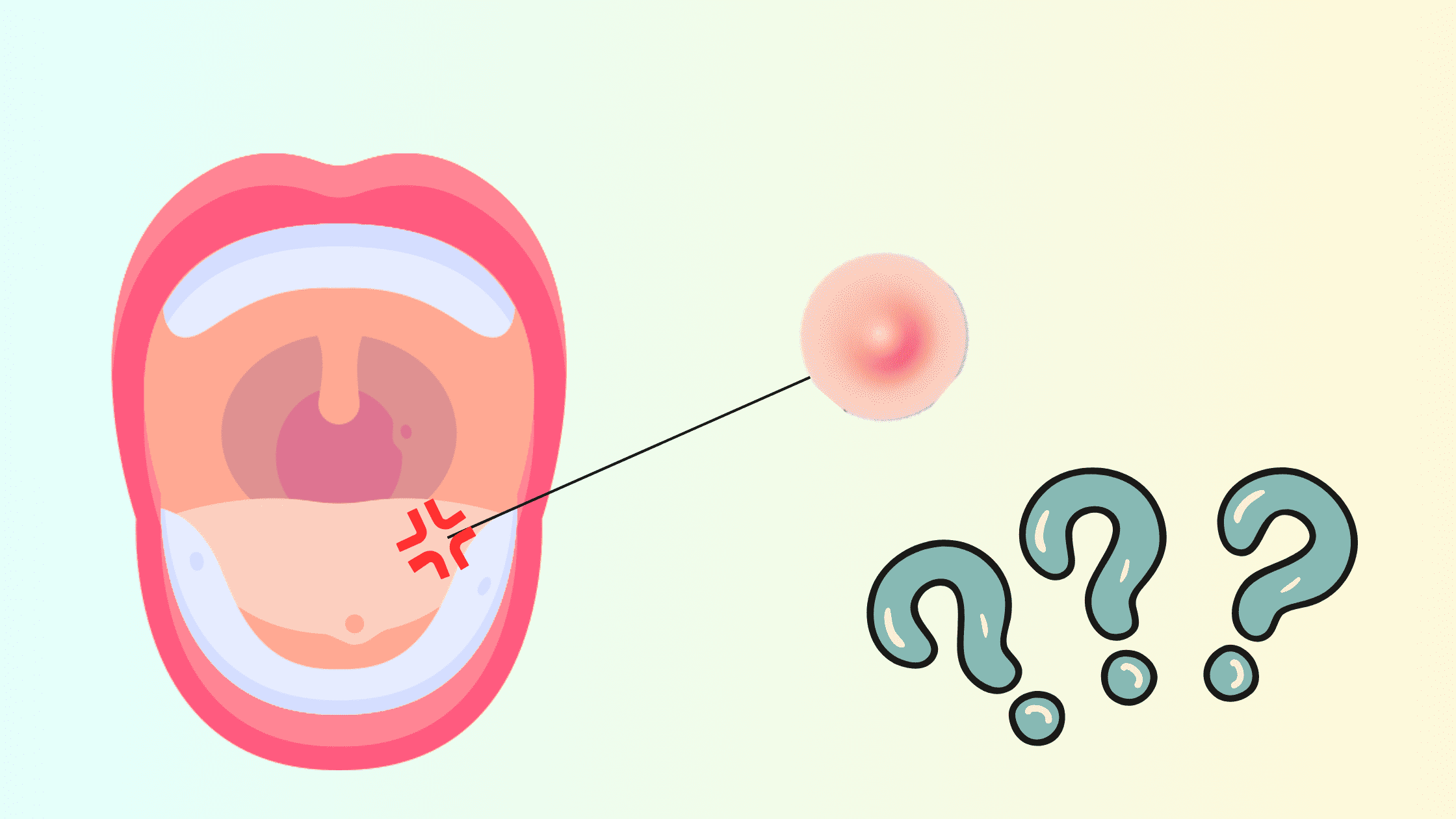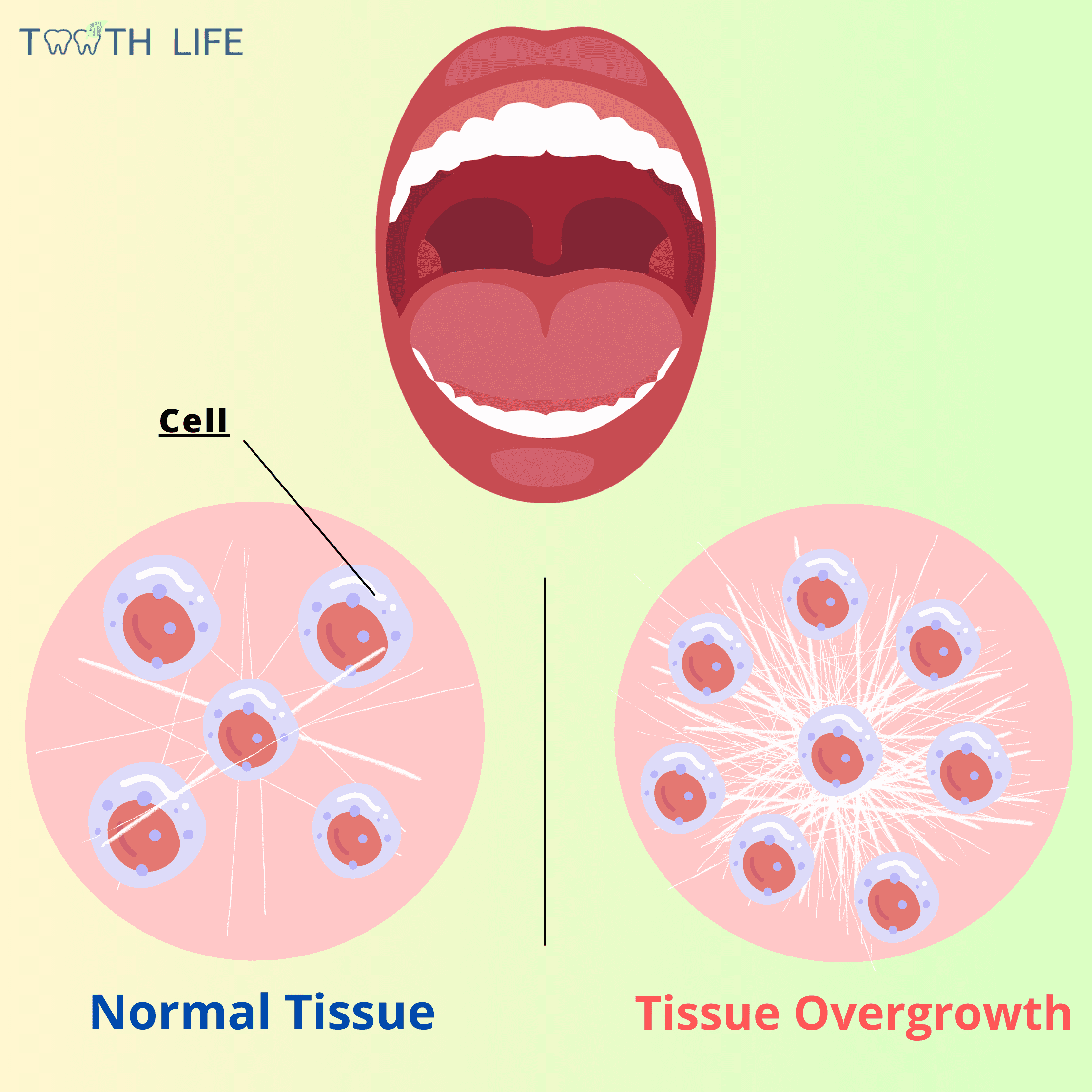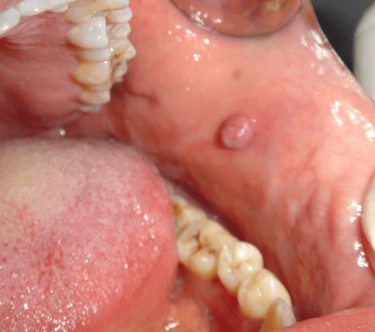Understanding Oral Fibromas: What's That Bump in Your Mouth?
 Discovering a hard growth or bump inside your mouth can be a cause for concern. But before you jump to conclusions and let anxiety take over, it's essential to understand that most mouth growths and tumors are benign and harmless. One of the most common is known as a fibroma.
Discovering a hard growth or bump inside your mouth can be a cause for concern. But before you jump to conclusions and let anxiety take over, it's essential to understand that most mouth growths and tumors are benign and harmless. One of the most common is known as a fibroma.
Still, it's always a good idea to see your dentist or healthcare professional for a definitive diagnosis.
In this post, we'll explain what exactly oral fibroma is, causes, main features, and most importantly, when to worry and seek professional help.
In this article:
1. What is Oral Fibroma
2. What's the Most Common Cause of Oral Fibroma
3. What Does Oral Fibroma Look Like
4. Other Oral Lumps That Look Like Fibromas
5. Should Oral Fibromas Raise Concerns
6. How Are Fibromas Treated
7. How to Prevent Oral Fibromas
What is Oral Fibroma
Oral fibromas are non-cancerous growths that can show up in your mouth. They can pop up anywhere, like on your tongue, gums, inside your cheeks, or even on the roof of your mouth.The name "Fibroma" comes from the type of tissue they're made of, which is fibrous connective tissue. They are also called different names, like irritation fibroma, fibroepithelial polyp, or focal fibrous hyperplasia.
Fibromas are like your body's way of responding to long-lasting irritation or injury in your mouth. Just like how muscles grow when you lift weights, the tissues in your mouth can also adapt to ongoing stress.
The cells start producing a lot of collagen, which forms a hard lump of scar tissue. These growths can affect anyone, but they're more common in people between 30 and 50 years old.

What's the Most Common Cause of Oral Fibroma
Anything that repeatedly irritates the mouth tissues can trigger a fibroma. If something in your mouth is constantly rubbing or injuring the soft tissues, a fibrous overgrowth can occur.Some common culprits include habits like biting your cheeks or lips, sucking on them (which often happen with issues like misaligned or missing teeth), sharp tooth edge, or an ill-fitting denture or crown. Even metal braces can cause irritation that leads to abnormal growth.
Rarely, specific types of fibroma may be due to factors other than chronic irritation. These include certain medications, serious illnesses (like diabetes or blood cancer), or even genetics. The exact causes of some abnormal growths, like giant-cell fibromas, are still unclear.
Because these lesions can look similar and vary in severity, a biopsy may be necessary to know exactly what's going on.
What Does Oral Fibroma Look Like
How to tell if it's a fibroma? Fibromas can look different from one person to another, depending on their location and cause.Typically, they're small, usually about 1 to 2 centimeters in size. They can be oval or round with well-defined limits. They can be attached by their base or by a small stem.

The outer layer usually looks normal, similar to the surrounding tissues, but if the irritation persists, it might turn white.
When you touch them, they can feel soft or hard. Most of the time, they don't cause any pain or other symptoms, but if they get injured, they can become painful, inflamed, or even develop ulcers.
Other Oral Lumps That Look Like Fibromas
Many other oral conditions can look like fibromas. The good news is that most of them are harmless and not a threat to your health.The main difference between these growths is the type of tissue they come from. For example, Mucoceles are cysts that originate in the salivary glands and can look like blisters.
Papillomas, also known as warts, are benign growths that have a cauliflower-like surface and are caused by a viral infection (Human Papilloma Virus).
Then there are Lipomas, which are benign tumors that resemble fibromas but come from fat tissue and are usually soft and yellowish.
Neurofibromas also look like fibromas but originate from nerves and surrounding cells. They're slow-growing and don't cause symptoms.
Fibrosarcomas, which are like the malignant (cancer) version of fibromas. They are rare and look harmless at first, but can grow aggressively at later stages.
Should Oral Fibromas Raise Concerns
Most of the mouth growths, including fibromas, are benign and don't have the potential to become oral cancer. If you spot something in your mouth that matches what we've discussed, it's likely a fibroma or a similar benign growth.However, just to be safe, it’s always a good idea to consult your dentist or healthcare professional. Even small changes in your mouth—like unusual red or white patches, persistent ulcers, swelling, or discomfort—should not be ignored.
Symptoms that should raise concern include:
- A lump that is growing quickly
- The growth looks aggressive
- Unexplained bleeding
- Pain or tingling sensations
- Unhealthy appearance of the surrounding tissue
Your dentist may recommend a biopsy to determine the exact nature of the lesion and suggest the appropriate treatment.
How Are Fibromas Treated
The treatment consists of surgical removal. There are several methods for this, including:- Cryosurgery: Using extreme cold to freeze and remove the growth.
- Laser surgery: Using focused light energy to cut out the growth.
- Surgical excision: Physically cutting out the growth with surgical instruments.
After the growth is removed, it will be sent to a specialist for microscopic examination.
Recovery is usually smooth and quick. You may experience mild pain for the first few days, but it should gradually improve as you heal. During this time, stick to a soft diet, avoid smoking and hot or spicy foods, rinse with salt water, and follow any medications prescribed by your doctor.
How to Prevent Oral Fibromas
If you don’t fix what caused the fibroma in the first place, it can come back.But it’s not just about preventing fibromas—chronic irritation can lead to more serious problems like infections or even precancerous changes in your mouth lining.
Fixing the irritation might mean adjusting a denture that doesn’t fit well, smoothing out sharp teeth, or addressing habits like cheek or lip sucking.
If you grind your teeth, managing stress and getting a night guard can help. And if you wear braces, using orthodontic wax can protect your mouth from injuries.
It all comes down to being aware of your oral habits and taking good care of your mouth to keep it healthy and problem-free.
- A Color Handbook of Oral Medicine De Richard C. K. Jordan, Michael A. O. Lewis
- Essential Of Oral Pathology - Book by Swapan Kumar Purkait
- Giant-cell fibroma: Understanding the nature of the melanin-laden cells - PMC (nih.gov)
- Cryosurgery: A Simple Tool to Address Oral Lesions - PMC (nih.gov)